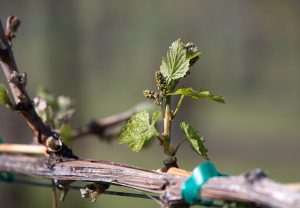Authored by: Jay DeWitt, Vigneron/Managing Winemaker
 We are frequently asked, “how was the vintage?” A simple answer just scratches the surface. Many factors contribute to the overall quality of a particular vintage, but most important is how warm it was. Micro climates vary widely in the Walla Walla AVA. We keep track of “heat units” to compare one vintage to another. (If the average temperature on a given day is above a chosen base (for us 50° F), one heat unit is recorded for each degree above the base. For example, an average temperature of 75° earns 25 heat units.) From one year to the next, heat unit accumulation can vary by as much as 20%.
We are frequently asked, “how was the vintage?” A simple answer just scratches the surface. Many factors contribute to the overall quality of a particular vintage, but most important is how warm it was. Micro climates vary widely in the Walla Walla AVA. We keep track of “heat units” to compare one vintage to another. (If the average temperature on a given day is above a chosen base (for us 50° F), one heat unit is recorded for each degree above the base. For example, an average temperature of 75° earns 25 heat units.) From one year to the next, heat unit accumulation can vary by as much as 20%.
When planting, the farmer chooses varieties that will do well in average heat for the site. In addition, farmers choose multiple varieties or clones that will do well in both hotter or cooler years. The result is that there will always be something really good grown in the vineyard, despite micro climate variation. For instance, a great vintage for Merlot probably won’t be a perfect vintage for Cab Sauv, which needs a few more heat units to reach full maturity.
Winemakers are reluctant to talk about this openly, because they may wake up to a headline “Winemaker says 2013 no good for Cab Sauv!” The other truths are that growers can hasten or delay maturity by managing water deficits and canopy management; and good winemakers can make great wine even in imperfect years.
So, what about the 2019 vintage????? I think we will make the best Merlot we’ve ever had from the 2019 grapes. And we’re going to have some excellent Cab Sauv as well!